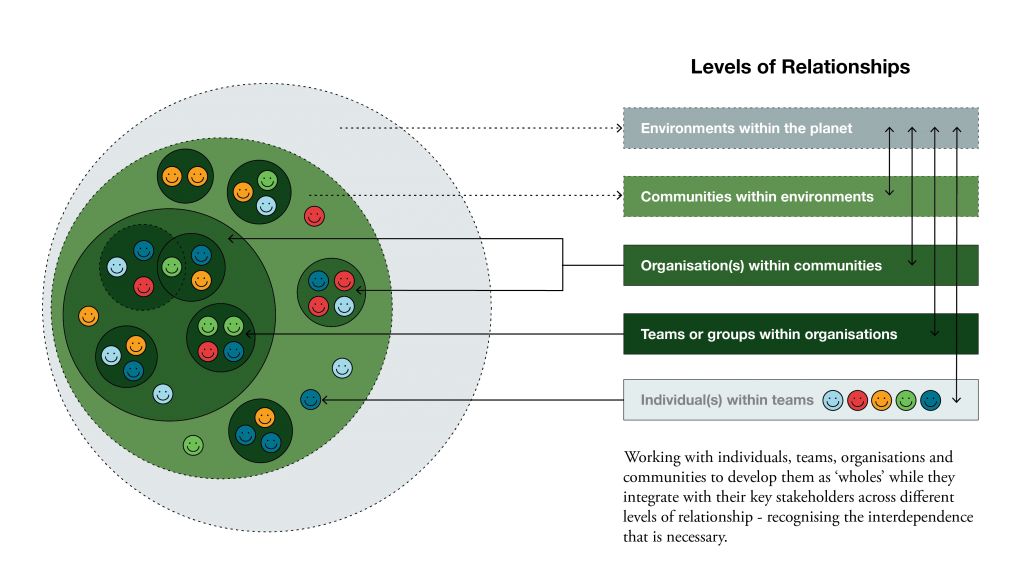Use these links for more information on key elements that inform/influence this website:
Working in Change & Uncertainty > Fundamentals

The information on this website is very much informed by a living systems approach to change. This requires an ongoing awareness of the contexts and interdependency of all things – ranging, for example, from the deep, rich experience and mindsets of an individual to the dynamics that unfold in groups and communities large and small.
Nora Bateson’s ‘word in progress’, Symmathesy is useful in succinctly describing each living system as ‘an entity formed by contextual mutual learning through interaction’.
This site uses the term ‘holarchies’ (wholes and parts) to provide an understanding of the potential levels of interdependency. This includes the inner ‘landscapes’ of helpers (practitioners) and helpees (clients). The diagram below shows how this model might be utilised to see the levels of relationship.

It’s important to remember that ultimately it is the individuals (with their values, principles, mindsets and paradigms) that are participating in the groups, organisations and society where change is manifested. However, it is also important for us to be aware of all the interdependencies and contexts that influence and define the ongoing change.
On this site, and with systems theory in general, we are cautious about how we utilise models, tools and paradigms to understand working in change. While they are essential to helping people work with change individually and in groups/organisations/communities, they are simplifications of reality.

‘In other words, as systems theory never fails to point out against positivism, scientism, and reductionism, we must not forget that we are talking about models constructed for the purpose of explanation, not about reality, which has no purpose in explanation, no purpose to explain.’
Anthony Wilden, System and Structure